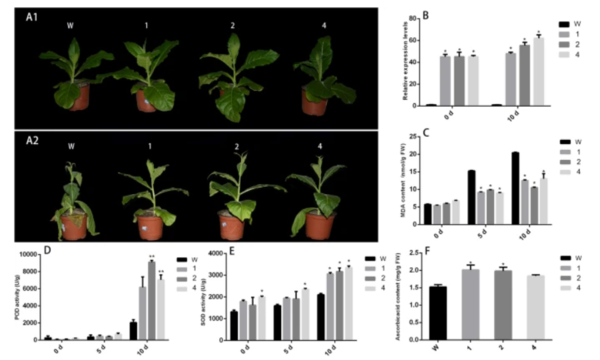GDP-mannose 3, 5-epimerase (GME, EC 5.1.3.18), a key enzyme in the ascorbic acid synthesis pathway, catalyzes the conversion of GDP-D-mannose to GDP-l-galactose in higher plants. Here, a homolog of GME was isolated from Chrysanthemum vestibulum. The cDNA sequence of CvGME was 1131 bp and contained a complete open reading frame encoding a protein comprising 376 amino acids. Quantitative real-time PCR analysis revealed that CvGME was most highly expressed in the stems and roots.

Phylogenetic analysis showed that CvGME was closely related to LsGME from Lactuca sativa. Subcellular localization studies revealed that CvGME was localized in the nucleus. Heterologous expression of CvGME in transgenic tobacco plants increased the ascorbic acid content in the leaves. In addition, overexpression of CvGME reduced the malondialdehyde content and increased superoxide dismutase and peroxidase activity in tobacco leaves compared to those in the wild-type plants under drought stress conditions explaining the increased drought tolerance of transgenic tobacco lines.
These results suggest that CvGME can effectively enhance the tolerance of plants to drought by increasing the ascorbic acid content, which may help improve the drought tolerance of chrysanthemums through molecular breeding.
Read the complete research at: www.nature.com
